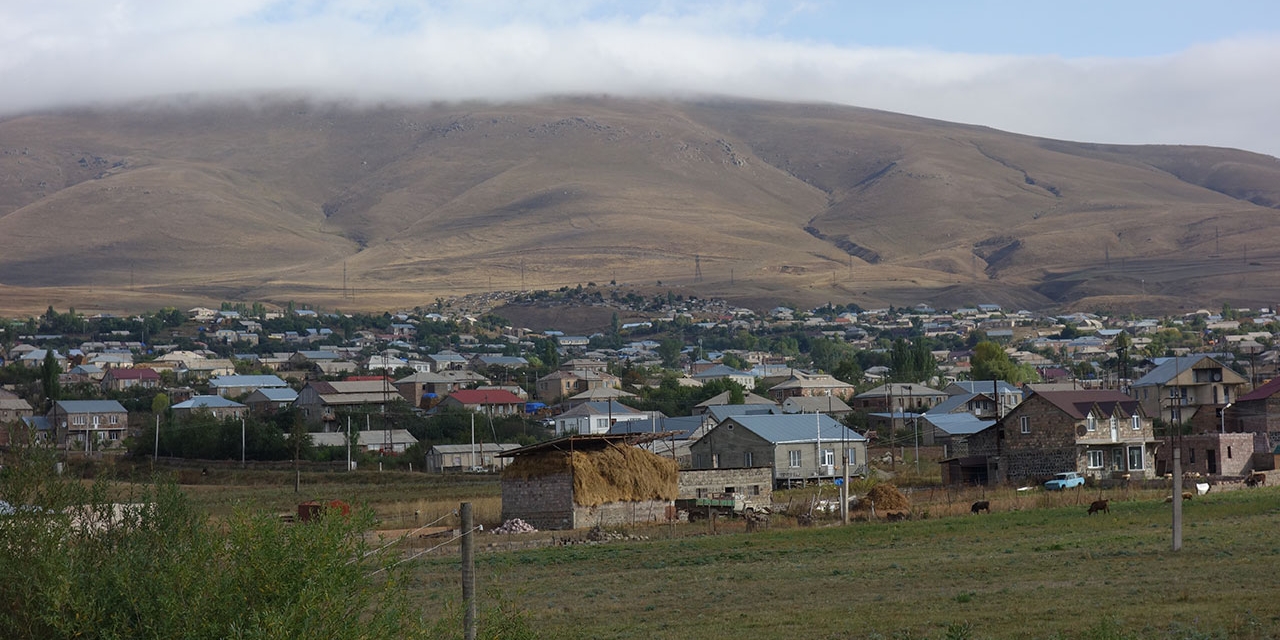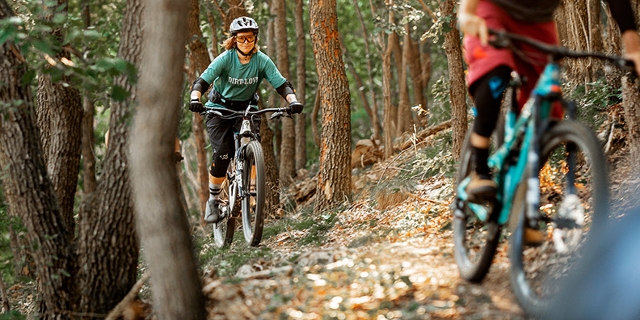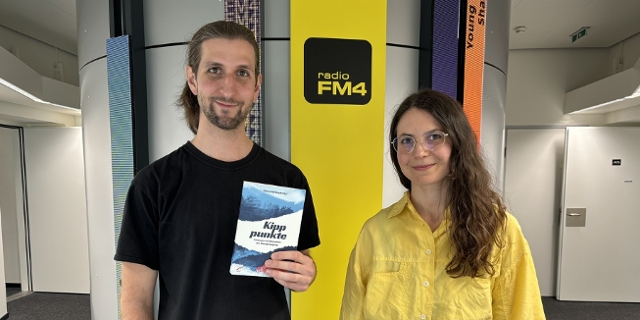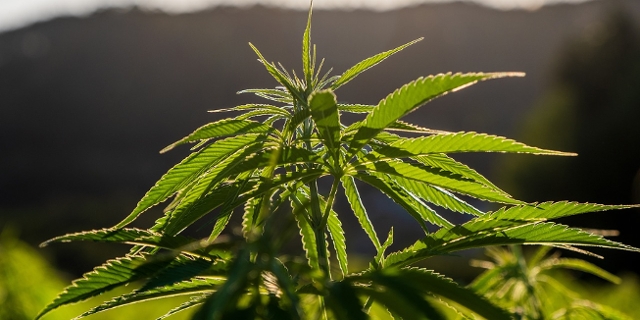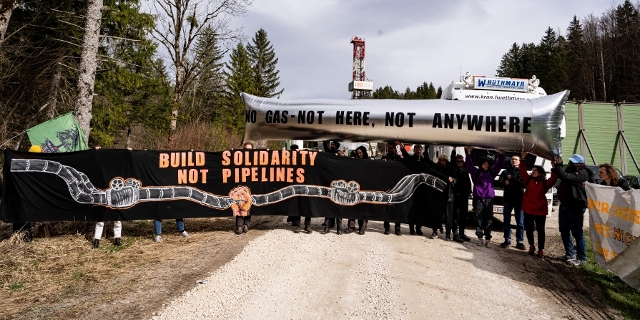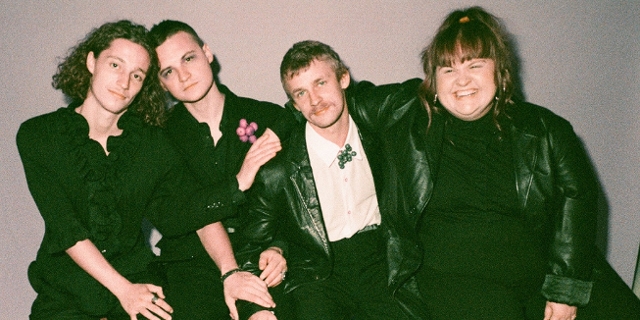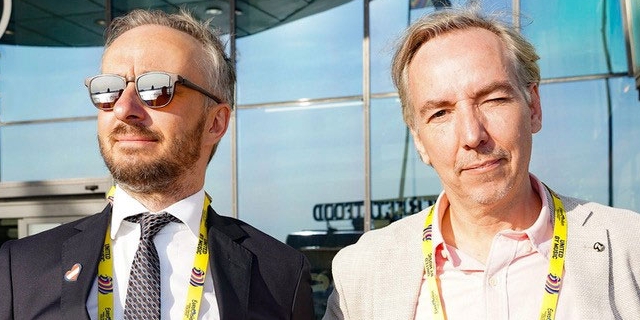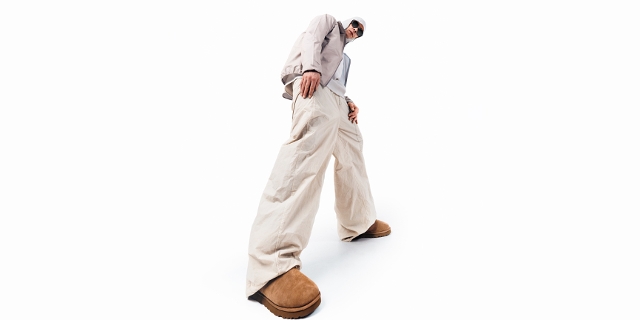The Land that Welcomes Syrian Refugees
In an echoing workshop on Davit Bek street, in the eastern part of Armenia’s capital Yerevan, Hakop Najaryan, a muscular 64-year old from Aleppo, is standing over a compressed-air driven machine, drilling into a metal plate with a watchful eye.
This noisy tool, along with an electric screwdriver and some angle-grinders, have helped him start up a small business in Yerevan with his 72-year old partner and namesake Hakop Galajian; using the skills they have acquired over a lifetime to power a fresh start in a new country.
“There was no possibility for living in Aleppo,” says Najaryan, as he hands me a bright orange soft drink. “There was danger everywhere. Every moment we were afraid of bombs and mortars.”
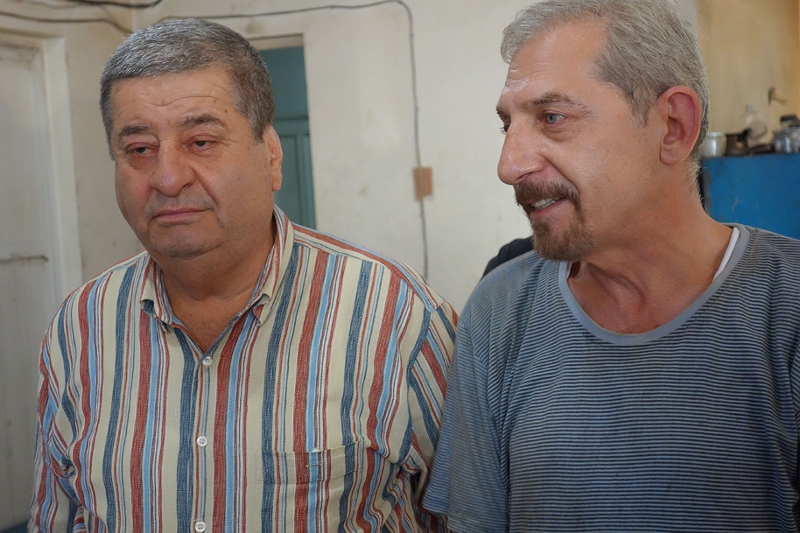
Chris Cummins / Radio FM4
One of those bombs landed on Galajian’s sophisticated factory in Syria’s second city. Four of his workers lost their lives in the blast and both Hakops fled with their immediate families via Lebanon to Armenia, escaping kidnap attempts on the way. As ethnic Armenians they were given passports and citizenship in the Republic of Armenia but the tools, provided as a gift by a partly Austrian-funded project called IRIS, have helped them get back to the work they’ve known all their lives.
“My People Are Living Here”
Integration into economic life helps maintain the new arrivals dignity and pride. “We’re hard working people,” Najaryan says, “We want to do business.” Septuagenarian Galajian, genial but vigorous, notices my raised eyebrows as his tells me his age. He pulls up his sleeve and shows me his biceps, before creasing into a grin and slapping me on the shoulder with ham-like hands. “This is a small, small business,” he says. “But it is business.”
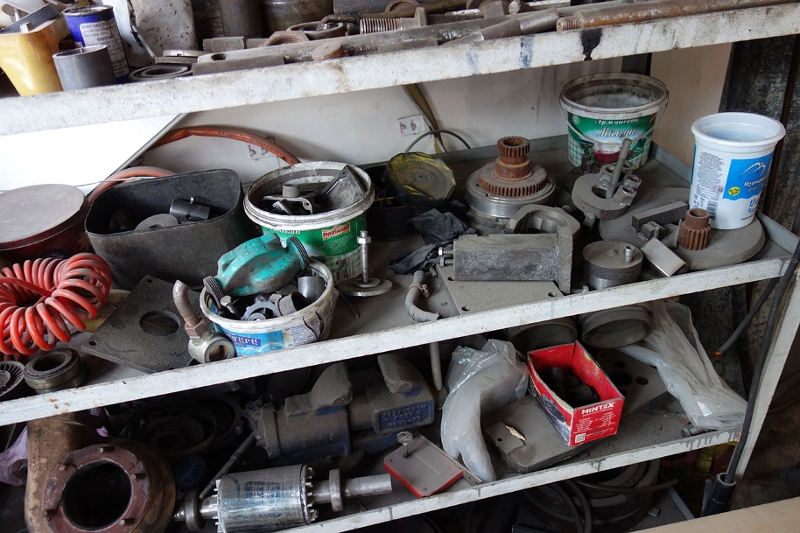
Chris Cummins / Radio FM4
Hakop says his Aleppo factory, which provided engine parts for renowned international car manufacturers, used to have a turnover of thousands of dollars a day. Now, after four years in Yerevan, he says he is happy if he makes $500.
You sense the loss in stature rankles. But, for both men, the important thing is that their families are safe. They are part of a wave of 22,000 Syrians of Armenian descent who have arrived in the Republic of Armenia since the start of the Syrian conflict. And they say they feel welcome in Yerevan. “My people are living here,” says Najaryan, “I can communicate with them easily.”
A Kick Start
IRIS, a Red Cross project, stands for “Increased Resilience of Syrian Armenians and Host Population.” The program, co-funded by the EU, the initiative Nachbar im Not and with a 135.000 euro contribution from the Austrian Development Agency.
In the case of the two Hakops, this helped them buy the tools they needed to start up their Yerevan workshop. But for others, explains the projects director Michael Grabner, an Austrian with long experience in the South Caucasus, the needs could be legal support and networking help.
New arrivals from Syria are given support in accessing the health system or the education system. Syrian Armenians are re-trained to adapt to the local economy, and small businesses, such as the Hakops’ workshop, are given financial support.
“Syrian Armenians are highly qualified usually. They have businesses at home and they just have to restart their businesses in their home country,” explains Michael Grabner. “But this only works with help from abroad:”
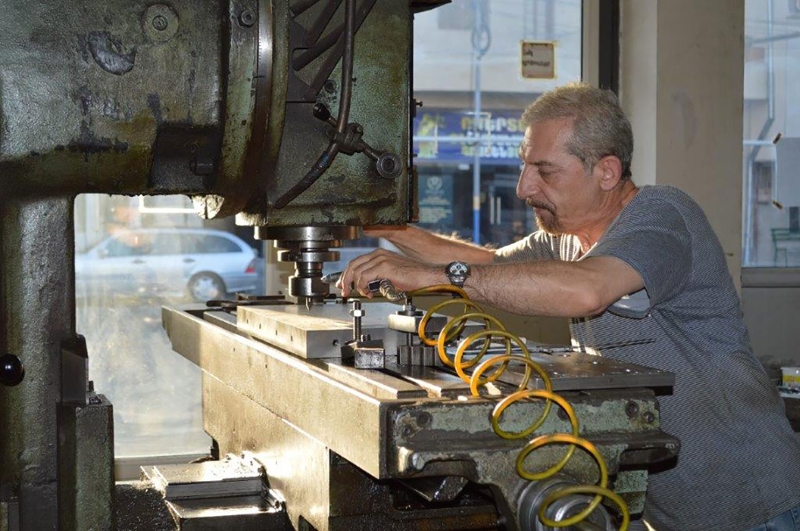
Austrian Development Agency
Najaryan is grateful for the support. “If you change your country, there are difficulties,” he says, “But when you have fled from war to another country there are so many more difficulties because you don’t have any money or anything that you could bring with you.”
An Opportunity
22,000 new arrivals fleeing war is a large number for the tiny Caucasus nation of less than 3 million people to absorb; especially since it suffers from an unemployment rate of nearly 18%.
However, whereas many countries have considered hosting the displaced people of Syria as a burden to be borne or avoided, Armenia sees the arrival of these Syrian Armenians as an opportunity to be grabbed with both hands. Why?
“The population and the government are very concerned with population loss due to migration; low replacement fertility, that sort of thing,” explains Shombi Sharp, the United Nation’s Resident Co-Ordinator to Armenia. “So, when you have a population coming who are ethnic Armenians and can be relatively easily integrated into society then that is, in a way, a blessing.”
Memories of the Genocide
Perhaps a cultural memory of persecution explains the remarkable welcome given to most refugees. The trauma of terror and flight experienced by Najaryan and Galajian is just a new chapter in a long cruel story of Armenian displacement. Just over 100 years ago, during a series of ethnic massacres that began in April in 1915, thousands of Armenians were force marched into the Syria desert. It’s estimated that 1.5 million men, women and children died in what became known as the Armenian Genocide, a grim precursor to the Nazi Holocaust.
Of those who survived, many arrived, emaciated, sunburned and penniless, in Aleppo. From there the Armenian refugees spread and thrived across the globe but a strong Armenian community remained in Syria’s second city until the civil war broke out there in 2011, and, once again, thousands of ethnic Armenians found themselves uprooted by violence.
Fleeing to the Republic of Armenia, the official homeland of Armenian culture, rather than a richer western country, felt like a natural choice for people like Hakop Najaryan. “There were alternative countries such as Canada or Europe,” he says, “but I prefer Armenia because Armenia is my homeland.”
A Welcoming Culture
You do hear mutterings that it is easier for Syrian Armenians to get medical attention than it is for the resident population, but the griping is limited. “I would say that all Armenians accept Syrian Armenians very well,” insists Lusine Stepanyan from the Armenian branch of the NGO Caritas. She uses the example of Yerevan taxi drivers, who are usually notorious for charging extra to foreigners. “When taxi drivers get to know that the person that is in their taxi is a Syrian Armenian, there were many cases that drivers didn’t take any money.”
Cultural Ethnic Identity is Strong
This sense of ethnic solidarity doesn’t surprise political analyst Alexandr Iskandaryan from the Caucasus Institute. The history of the modern independent state of Armenia goes back less than 30 years but the history of a distinct Armenian culture goes back over two and a half millennia to the time of the Ancient Greeks: “The political identity of the Republic of Armenia is still new,” he points out. “For more than 600 years we didn’t have a state. But cultural ethnic identity is very strong.”
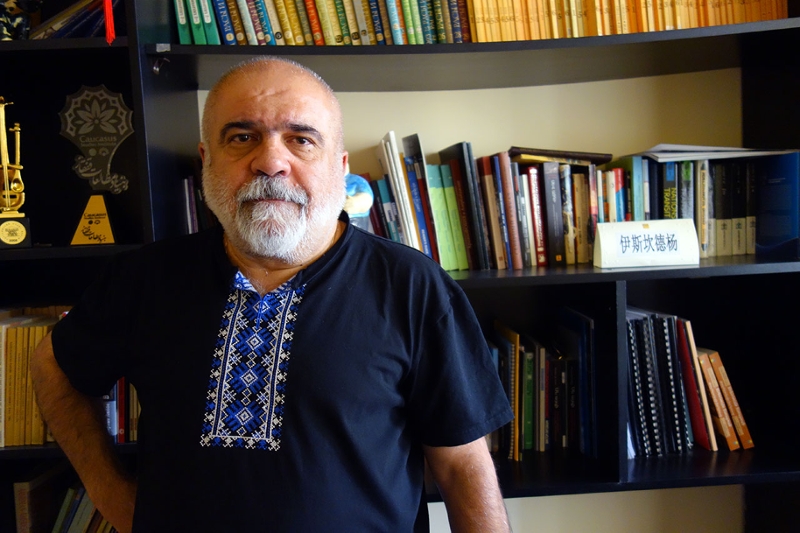
Chris Cummins / Radio FM4
There are some linguistic difficulties. The Syrian Armenians speak a dialect known as West Armenian, whereas Eastern Armenian is the common dialect of Yerevan, but this seems to have added spice to the city rather than sown misunderstanding. Lusine Stepanyan claims the Syrians are the protectors of the authentic Armenian culture of the ancient Anatolian kingdoms, and have sprinkled some of the heritage of the ancient Armenian into the breeze-block modernism of Yerevan.
She adds that they have brought a new business culture, an invigorating employment culture and a new service culture with them to Armenia. This is best symbolized in the new eateries that have popped up all over Armenia. “If you go around Yerevan or other cities you will see many Syrian Armenian restaurants. And if you see a person who is smiling at you from the very first moment, he or she will be Syrian Armenian.”
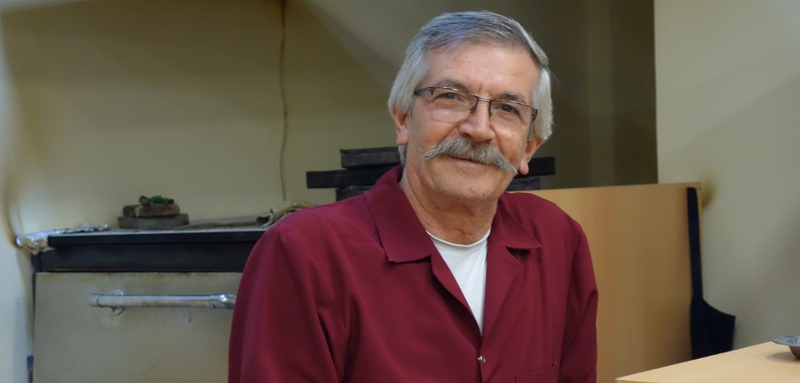
Chris Cummins / Radio FM4
Syrian Armenia restaurant owner Krikor Ishakian.
Gaps in the Market
It is not just the smiles that have softened the hearts of the host community. There is a level of self-interest in encouraging the Armenian Syrians to stay, despite the current unemployment issues.
“Our markets have some gaps and Syrians are filling these gaps,” explains Hasmik Khachatryan of the Armenian Red Cross. “Usually they are very good masters and skilled people in their crafts; for example, car maintenance. If you go onto the street and ask an Armenian where to take your car to be repaired they will point you to a Syrian Armenian.”
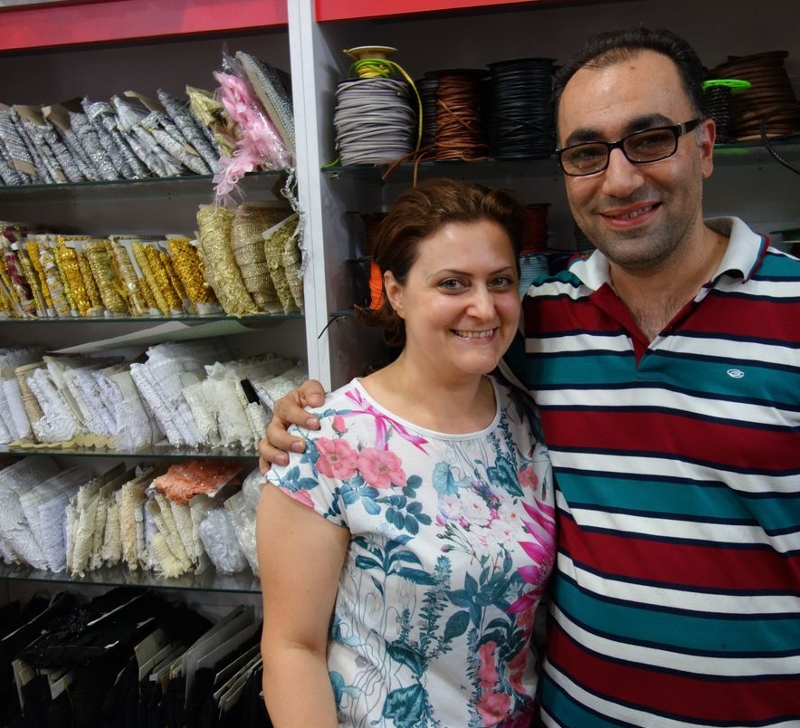
Chris Cummins / Radio FM4
Syrian Armenian tailors Marina Shihanian and Thomas Kevork.
As soon as people are working, interacting with their customers and colleagues and spending their well-earned money in the Armenian economy, integration is pretty easy. As well as being about welcoming the diaspora home, Hasmik Khachatryan of the Armenian Red Cross insists that IRIS is also about developing society.
“It is not just the Diaspora; some Arabian people arrive too. We learn to be more accepting and open minded.”
Publiziert am 17.10.2018







